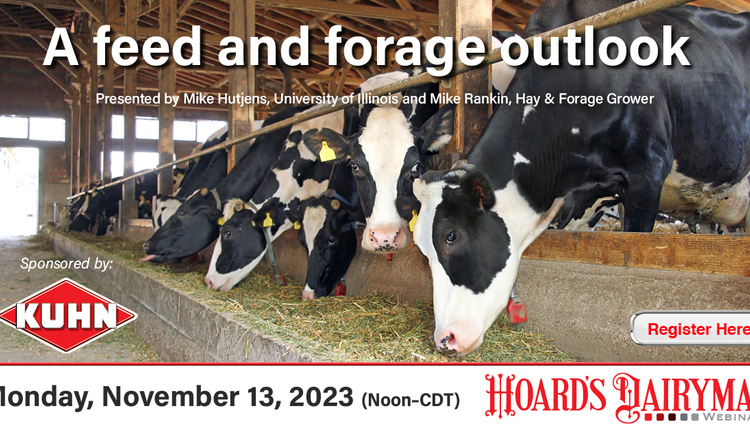The author is an extension dairy specialist at the University of Illinois, Champaign-Urbana
Feed additives are ingredients added for a non-nutrient role. (For example, sodium bicarb is added as a rumen buffering agent, not a source of sodium.) Additives vary in cost from 3 to 30 cents a cow a day. The main reason to add a feed additive is to enhance cow performance based on farm conditions, research results, the additive's role, and economic returns. Here, I outline additives that may help you and your advisors decide if an additive should be included.
The category, current status, is classified in the following ways.
Recommended: Include as needed.
Experimental: Additional research is needed before recommending.
Evaluative: Monitor individual farm situation (there will be variable responses).
Not recommended: Currently lacks economic response.
[Enzymes (fibrolytic)]
1. Function: Improve fiber digestibility by breaking down fiber and helping intakes.
2. Level: Not clearly defined (enzymatic units per unit of feed dry matter).
3. Cost: 15 to 30 cents per cow per day.
4. Benefit-to-cost ratio: 2 to 3:1 (Canadian data).
5. Feeding strategy: Improve fiber digestibility, treated 12 hours before feeding, spray- on product more effective when applied to dry diets. May be diet specific.
6. Status: Experimental.
[Enzymes (starch-amylase)] 1. Function: Amylase-based enzymes can improve total tract starch digestibility and improve milk yield and feed efficiency.
2. Level: 300 kNU per kg dry matter intake. 1 kNU = approx 6 "Ceralpha Units" using the Megazyme International amylase assay.
3. Cost: 15 cents per day.
4. Benefit-to-cost ratio: 3:1 (U of WI data).
5. Feeding strategy: Improve starch utilization reducing corn levels needed and replacing it with lower cost rumen fermentable carbohydrate sources.
6. Status: Experimental.
[Monensin (Rumensin - brand name)]
1. Function: Improve feed efficiency for cows in milk, reduce ketosis and displaced abomasums in transition cows by shifting rumen fermentation and microbial selection. Milk yield may go up 2.2 pounds per day. Control cocci in calves and heifers.
2. Level: 11 to 22 grams per ton of total ration dry matter consumed (250 to 400 mg/cow/day). Lower levels in calves and heifers.
3. Cost: 1 cent per 100 mg per day.
4. Benefit-to-cost ratio: 5 to 1.
5. Feeding strategy: Feed to dry cows to reduce metabolic disorders and to milking cows for feed efficiency while monitoring milk components to evaluate optimal levels of monensin.
6. Status: Recommended.
[Prebiotics (Nonviable probiotics)]
1. Function: Stimulate bacterial growth or reduce bacteria growth that can reduce animal performance. Examples include inulin (stores carbohydrates), oligofructose, yeast cell wall products, mannan oligosaccharide (MOS) products, butyrate (0.16 g/liter of milk), lactoferrrin (2 mg/ml of colostrum).
2. Level: Varies by product and brand.
3. Cost: 4 to 15 cents per day.
4. Benefit-to-cost ratio: Not available.
5. Feeding strategies: Feed to calves and animals exposed to undesirable bacteria in the digestive tract.
6. Status: Experimental.
[Probiotics (Bacterial direct-fed microbes)]
1. Function: Produce metabolic compounds that destroy undesirable organisms, provide enzymes improving nutrient availability, or detoxify harmful metabolites.
2. Level: Not clearly defined.
3. Cost: 5 to 15 cents per cow per day.
4. Benefit-to-cost ratio: Not available.
5. Feeding strategy: Feed to calves on liquid diet, transition cows, high levels of rumen fermentable starch/carbohydrates, and during stress conditions.
6. Status: Evaluative for cows. Recommended for milk-fed calves.
[Yeast culture and yeast] 1. Function: Stimulate fiber-digesting bacteria, stabilize rumen environment, and utilize lactic acid.
2. Level: 10 to 120 grams, depending on yeast culture concentration.
3. Cost: 4 to 6 cents per cow per day.
4. Benefit-to-cost ratio: 4:1.
5. Feeding strategy: Two weeks before calving to 10 weeks after, calf starter feeds, and during off-feed conditions and stress periods.
6. Status: Recommended. Click here to return to the Dairy Probiotics E-Sources 100925_620


